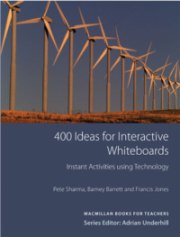Short Book Reviews
Hanna Kryszewska, Poland
Hanna Kryszewska is a teacher, teacher trainer, trainer of trainers. She is a senior lecturer at the University of Gdańsk, and EU Teacher Training College where she trains pre-service teachers. She is co-author of resource books: Learner Based Teaching, OUP, Towards Teaching, Heinemann, The Standby Book, CUP, Language Activities for Teenagers, CUP and a course book series for secondary schools: ForMat, Macmillan. She is also co-author of a video based teacher training course: Observing English Lessons. Hania is a Pilgrims trainer and editor of HLT Magazine.
E-mail: hania.kryszewska@pilgrims.co.uk

Outcomes: Advanced. H. Deller and A. Walkley. Heinle CENGAGE Learning. (2012) ISBN-13: 978-1-111-21175-2 ( pp.184) This coursebook is one of the 5 levels of a new general English course for adults. It presents and teaches natural and ‘real world English’ catering for the social and academic needs of adult learners. The topics are predictable like: marriage, politics or health but the choice of text and the approach are interesting and unpredictable. The visual material which accompanies the texts is authentic and though provoking. The course is well structured with clear outcomes in every lesson and regular review sections. There is also additional on-line practice available for self-study (an individual pin code comes with every coursebook). Finally, there is a Vocabulary Builder booklet, presenting vocabulary as individual words out of context, as well as example phrases showing how the words are used in chunks. The book strikes as a very adult one, although unfortunately a bit repetitive throughout the whole series. Also I am not sure how adult advanced learners will like having to play a board game almost every review unit.

The Theory of Multiple Intelligences and Language Teaching. P. Torresan. Guerra Edizioni. (2010). ISBN 978-88-557-0364-2, pp46. Howard Gardner’s theory of learning has inspired many language teachers and in many countries revolutionised language teaching. The booklet, or‚ document as the author calls it, is another voice which looks at the possibilities of adapting the theory to language teaching. The author looks at how addressing multiple intelligences and different learning styles can aid the teaching of the four language skills, and of vocabulary and pronunciation. This concise booklet provides elements of both theory and practical classroom ideas of how to address the multiple intelligences in ELT. The author also attempts to show how multiple intelligences and various learning styles are interconnected and interdependent.The publication appeared in the series Language Teaching Methodology: The Venetian School. Looking at both the booklets that have already been published and those scheduled for publication it looks like a very informative and successful series.

Welcoming Linguistic Diversity in Early Childhood Classrooms. ed. E. Murphy. (2011) Multilingual Matters. ISBN 978-1-84769-346-4, pp 232. This book comes from a publishing house language teachers may not know very well. I believe they may benefit a lot from becoming familiar with their publications. Multilingual Matters is an international independent publishing house, with lists in the areas of bilingualism, second/foreign language learning and sociolinguistics, just to name a few. The book in question looks at ways to address the needs of very young children who come to school and do not speak the language of instruction. Twenty two teachers have contributed to the book and share their experiences in and out of the classroom. With the changing scene of the YL classroom, waves of immigration and social mobility, language teachers need to be informed about the key issues of multiracial and multiethnic classes..

400 Ideas for Interactive Whiteboards. Instant Activities using Technology. P. Sharma, B. Barrett and F. Jones. (2011) Macmillan. ISBN 978-0-230-41764-9, pp 272. This publication belongs to the successful Macmillan Books for Teachers series. As the title promises the book offers a wealth of ideas and resources to help teachers use interactive whiteboards in their lessons. The activities in the book fall into four groups: using regular programmes, using whiteboard software, using published materials, and adapting or creating your own materials. The activities are very inspiring and the procedures easy to follow with sufficient information on the vital technical details. Depending on how experienced you are in using interactive whiteboards you may skip some sections and focus on others. Overall it is a must-have for a modern teacher.

Please check the Methodology and Language for Kindergarten Teachers course at Pilgrims website.
Please check the Methodology and Language for Primary Teachers course at Pilgrims website.
Please check the Methodology and Language for Secondary Teachers course at Pilgrims website.
Please check the Teaching English Through Multiple Intelligences course at Pilgrims website.
Please check the Using Interactive Whiteboards course at Pilgrims website.
Please check the How to be a Teacher Trainer course at Pilgrims website.


|